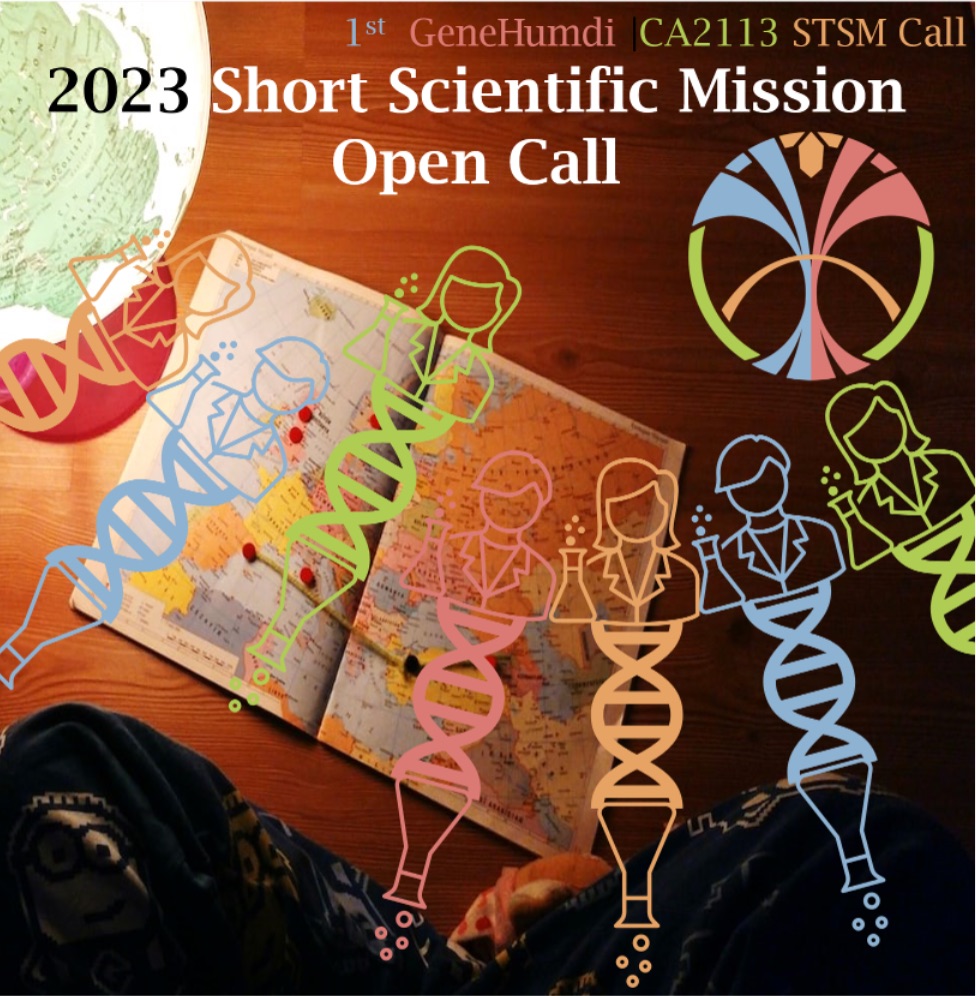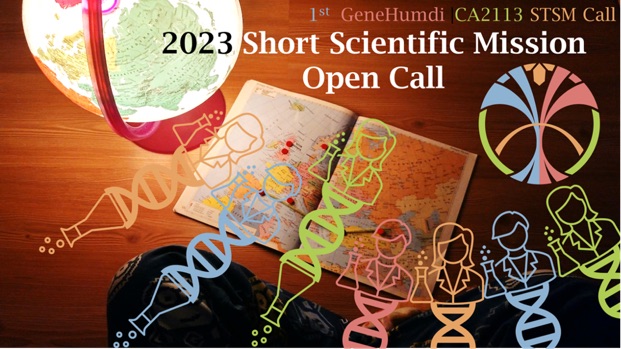Call for Applications: Short-Term Scientific Missions (STSMs)
The GeneHumdi COST Action CA21113 is excited to announce its 1st Call for applications for Short-Term Scientific Missions (STSMs). We invite passionate researchers like you to seize this exceptional opportunity to enhance your scientific knowledge and contribute to the advancement of your respective fields within the realm of genome editing to treat human diseases.
Why Engage in Short-Term Scientific Missions (STSMs)?
The GeneHumdi board is pleased to introduce Short-Term Scientific Missions (STSMs) funded by the prestigious COST Action program. These missions are designed to foster collaboration, strengthen networks, and facilitate knowledge exchange among researchers. By participating in STSMs, you gain access to research institutions or laboratories in other COST countries, enabling you to learn new techniques, utilize advanced equipment and methods, and contribute to the scientific objectives of the Action. Embrace this unique opportunity to expand your horizons, establish fruitful collaborations, and make significant strides in your research endeavors.
Harness the Power of Top Gene Editing Research groups in Europe
Participants in the COST Action’s Short-Term Scientific Missions (STSMs) have the freedom to focus their work on research topics highlighted by each GeneHumdi Working Group (WGs). Additionally, you have the liberty to introduce innovative ideas that align with the objectives of our Action. Explore the detailed content and goals of each WG in the Action’s Memorandum of Understanding (MoU). By aligning your STSM proposal with the scope of the dedicated WGs, you can maximize the impact of your research while contributing meaningfully to the GeneHumdi mission and to your field.
Guidelines for Applicants:
Financial Support: Successful applicants will receive travel grants for four Short-Term Scientific Missions (STSMs) offered by GeneHumdi. It is the responsibility of the grantees to arrange their travel, accommodation, and other logistics. During this period, STSM grants are awarded up to a maximum of €4,000. We encourage applicants to review the Annotated Rules for COST Actions to understand the financial framework.
Duration: STSMs must be completed within the 1st Grant Period of the Action, which concludes in October 2023. While there is no maximum duration for visits, the minimum visit should be at least 5 days, including travel time.
Application Deadline: Submit your applications by June 18th, 2023. Notification of decisions will be made by June 30th, 2023.
Eligibility: STSM travel grants are open to researchers and innovators associated with a legal entity in a COST Full/Cooperative Member, Near Neighbour Country, or European RTD. While all eligible candidates are encouraged to apply, young researchers and innovators under the age of 40 are particularly encouraged to participate.
Application Instructions: To apply for an STSM, utilize the e-COST management tool. Please ensure that you possess an e-COST profile, as it is mandatory for all applicants.
Submission Requirements: Use the e-COST management tool to submit your request for an STSM. Alongside the necessary information provided on the website, applicants are required to upload specific documents in a single PDF file, including:
- A brief CV highlighting your recent publications.
- The STSM proposal, outlining your research objectives and methodology.
- The requested budget in euros.
- A confirmation letter from the host institution.
Check the full call requirements and application score here: 1st Call for applications for Short-Term Scientific Missions (STSMs)
Eligible Topics
Each STSM must be aligned with one of the following topics:
- Topic 1: Mapping the existing endonuclease-Independ platforms (EIP) and their potential output in different applications, efficacy, specificity of the available endonucleases independent GE tools.
- Topic 2: Mapping the existing endonuclease platforms (EIP) and their potential output in different applications, efficacy, specificity of the available endonucleases independent GE tools
- Topic 3: Delivery methods used for GE of the different cell types that are used for clinical applications. non-viral systems, based on ribonucleoparticles (RNP) or plasmids, are the ex vivo systems of choice to deliver the GE complex into the target cells.
- Topic 4: Delivery methods used for in vivo GE in different animal models and in clinical settings. Including comparison of efficacy and specificity data for different GE tools delivered by different methods in each tissue/organ of interest.
- Topic 5: The establishment of a standardized pipeline for the unbiased identification and quantification of CRISPR off-target sites for therapeutic applications.
- Topic 6: Assessment of recombination events in gene editing approaches
- Topic 7: Comparison of the different constrains in the HDR-mediated gene editing in the most primitive HSPCs, and how the HDR may be enhanced.
- Topic 8: The evaluation of different GE strategies to target Hematopoietic stem cells in Fanconi anaemia cells in vitro, the sickle cell disease and beta-thalassemia, collagen VI deficiency and Emery Derfuss muscular dystrophy.
- Topic 9: Market research study and competitive analysis on gene editing based medicines including the following tasks: (i) Market opportunity. Target niche; (ii) Definition of targeted market, sales by category (product, territory, class and market share (sales peak, defining at least three different scenarios), positioning, market drivers and barriers.
- Topic 10: The analyse of regulatory requirements for the commercialization of gene editing based medicines.
Question and inquiries
Please contact GeneHumdi:
- Chair: Dr. Karim Benabdellah karim.benabdel@genyo.es
- Co-Chair: Dr. Alessia Cavazza a.cavazza@ucl.ac.uk
- Grant Awarding Coordinator: Dr. Paula Rio paula.rio@ciemat.es
- Sci. Comm. Coordinator: Dr. Javier Molina javier.molina@genyo.es
- Grant Holder Manager: Ms Maria Bazuelo mariaj.bazuelo@juntadeandalucia.es

